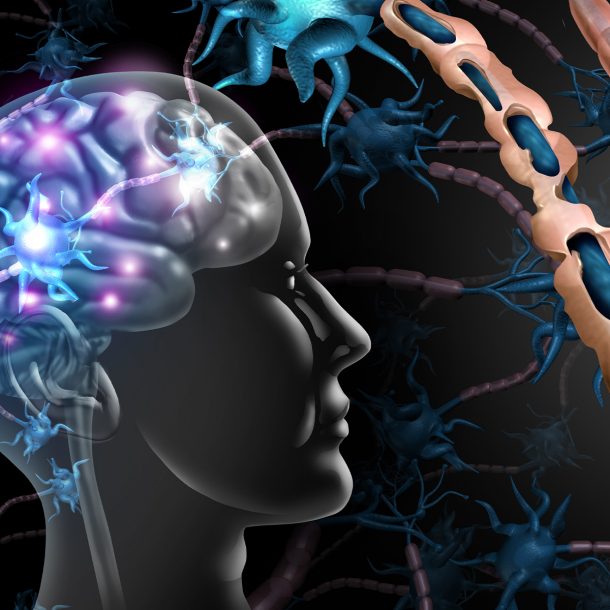-
Property & Casualty
Property & Casualty Overview

Property & Casualty
We offer a full range of reinsurance products and the expertise of our talented reinsurance team.
Expertise
Publication
Production of Lithium-Ion Batteries
Publication
PFAS – Rougher Waters Ahead?
Publication
Generative Artificial Intelligence in Insurance – Three Lessons for Transformation from Past Arrivals of General-Purpose Technologies
Publication
Did you Know? A Brief Reflection on La Niña and El Niño
Publication
Time to Limit the Risk of Cyber War in Property (Re)insurance -
Life & Health
Life & Health Overview

Life & Health
Gen Re’s valuable insights and risk transfer solutions help clients improve their business results. With tailor-made reinsurance programs, clients can achieve their life & health risk management objectives.
UnderwritingTraining & Education
Publication
Knife or Needle: Will the New Weight Loss Medication Replace Bariatric Surgery?
Publication
The Key Elements of Critical Illness Definitions for Mental Health Disorders Moving The Dial On Mental Health
Moving The Dial On Mental Health
Publication
On the Pulse of Policyholders with Wearables
Publication
Gen Re Critical Illness Data Insights – Key Takeaways from the Thailand Market [Infographic] Business School
Business School -
Knowledge Center
Knowledge Center Overview

Knowledge Center
Our global experts share their insights on insurance industry topics.
Trending Topics -
About Us
About Us OverviewCorporate Information

Meet Gen Re
Gen Re delivers reinsurance solutions to the Life & Health and Property & Casualty insurance industries.
- Careers Careers
Multiple Sclerosis – Something Old, Something New

September 05, 2024
Dr. Jonah Fox
English
Multiple sclerosis (MS) is one of the most common disabling neurologic diseases of young adults, with symptoms typically beginning between 20 and 40 years of age. MS is a chronic disease of the brain and spinal cord where the immune system attacks nerve fibers and causes communication problems between the brain and the rest of the body.
While the cause of MS is unknown, it is thought that both hereditary and environmental factors may play a role. Multiple viruses, including Epstein-Barr, and bacteria have been suspected to cause MS; however, no direct link has been proven conclusively.
Roughly 2.8 million people have MS worldwide, with prevalence varying based on age (more common in early adult life), gender (roughly 3:1 ratio of female to male), and geography (more common in countries with temperate climates), along with other factors. Symptoms of MS can vary greatly from person to person, and may include fatigue, decreased cognition, impaired mobility, changes in mood, impaired speech, numbness, weakness, and changes in vision, among others. The impacts of MS are profound for individuals and for society: MS is estimated to cause the loss of approximately 1,151,478 disability-adjusted life years globally. Roughly half of MS patients receive an average of 30 hours per week of informal care (unpaid care provided by someone in the patient’s social network).1
Within the United States alone, the annual economic burden to society, including patients, employers, government, insurers, and others, is estimated to be $85 billion.2 In the European Union, annual mean costs ranged from €22,800 (for mild disease) to €57,500 (for severe disease) in purchasing power parity, with direct medical costs accounting for up to 68% of these total costs.3
Patho-anatomy / Physiology
Multiple sclerosis refers to scar tissue (also known as sclerosis, or plaques) that result from a patient’s immune system attacking their central nervous system (comprised of the brain and spinal cord). MS can attack nerve cell bodies, myelin, and axons in the brain, spinal cord, and optic nerve. Myelin protects and surrounds axons and is crucial for transmission of information within the nervous system.
The cerebral cortex (the outermost layer of the brain) can also be affected, causing cortical atrophy. Among those with MS, symptoms are frequently determined by, and directly related to, the exact location of their plaques.4
MS is a complex disease, where the combination of environmental and genetic factors produce a chain of events leading to the activation of the immune system, central nervous system demyelination (loss of myelin), and nerve damage. The resulting symptoms are highly variable in nature, severity, and reversibility.
Diagnosis
A diagnosis of MS requires evidence of damage to the central nervous system that is separated in time and space. This means that damage must have occurred at different times/dates and to different parts of the central nervous system.
Dissemination in space implies that there are lesions in different areas of the brain or spinal cord based on symptoms and/or MRI findings. Dissemination in time implies the development of new lesions over time. Examples include finding acute and chronic lesions on MRI imaging, oligoclonal bands in the cerebrospinal fluid (CSF), and defined clinical attacks at different points in time.
Types of Multiple Sclerosis
The severity of disease associated with MS can differ significantly from patient to patient, with roughly 20% of patients remaining asymptomatic or mildly symptomatic after an initial clinical event and roughly 20% of patients progressing rapidly. The following types of MS have been described:
Clinically Isolated Syndrome (CIS)
The first symptoms due to inflammation and demyelination in the central nervous system. Not all people with CIS go on to develop MS; however, the chances are increased if an MRI shows brain lesions similar to those seen in MS. Symptoms of CIS are highly variable but frequently include the following:
- Visual problems
- Vertigo
- Loss of sensation in the face
- Weakness in the arms and legs, with one side of the body more affected than the other
- Difficulty with coordination, walking, balance, speaking, and swallowing
- Bladder problems
Relapsing Remitting MS (RRMS)
This type represents the most common type of MS, with roughly 85% of people with MS being initially diagnosed with RRMS. RRMS shows clearly defined attacks of new or worsening neurologic symptoms. Attacks are referred to as relapses, which are followed by periods of recovery, referred to as remission. Remissions may represent either partial or complete recovery.
Typical Relapsing Remitting MS Course Over Time

Secondary Progressive MS (SPMS)
SPMS initially follows a relapsing-remitting course; however, over time neurologic function and debility progressively worsen. SPMS does not have the distinctive remissions, flare-ups, or plateaus of RRMS, but instead is characterized by slowly worsening symptoms and neurologic function. Without treatment, approximately half of the individuals with RRMS convert to SPMS within 10 to 20 years.
Typical Secondary Progressive MS Course Over Time

Primary Progressive MS (PPMS)
With this type of MS, neurologic function and debility progressively worsen from the time initial symptoms are noticed, without the occurrence of relapses or remissions. Roughly 10% of people with MS have PPMS.
Typical Primary Progressive MS Course Over Time

Functional Impairment
While functional impairment in patients with MS can result from a number of potential complications, it should be kept in mind that the specific symptoms an individual may be experiencing should be considered in relation to occupation and job tasks when considering the capacity to return to work. As previously noted, symptoms can be highly variable and may include, but are not limited to, those listed below.
Multiple Sclerosis Symptoms
|
Fatigue |
Spasticity (stiff muscles) |
|
Pain |
Breathing dysfunction |
|
Depression |
Impaired gait & mobility, falls |
|
Visual abnormalities |
Vestibular (balance) dysfunction |
|
Impaired cognition |
Sleep disturbance |
|
Bowel & bladder dysfunction |
Speech impairment |
Treatment
Unfortunately, there is no cure for multiple sclerosis. There are, however, treatments that can slow the progression of the disease and reduce the frequency of relapses. Corticosteroids, which decrease inflammation by suppressing the immune system, can help patients recover more quickly from MS flares. Plasmapheresis (removing harmful components from the patient’s blood and then transfusing it back into the patient) can also treat MS attacks in people with relapsing forms of MS.
Another class of MS drugs, known as disease modifying treatments (DMT), reduces inflammation, and has been shown to decrease relapse rates and short-term disability when administered during the relapsing phase of MS. Interestingly, studies have shown that DMT initiation at the time of the first demyelinating clinical event that is suggestive of MS extends the time to the next relapse and decreases the two-year conversion to relapsing-remitting MS by 40‑45%.5
The importance of early detection is further proven by the fact that patients who switched from placebo to active treatment were more disabled at multi-year follow-ups compared to patients who were on active treatment from the start. Strong evidence suggests that use of DMTs reduces inflammatory activity and delays long-term disability progression; for the most part, patients with clinically isolated syndrome should be started on disease modifying treatment.6 While a number of the newer DMTs are administered intravenously (e.g., ublituximab, natalizumab), oral and injection-based DMTs do exist. Patient preference for route of administration, along with multiple other factors, may be considered when selecting appropriate medication.
Symptom Management
Symptoms resulting from multiple sclerosis can impact activities of daily living, including the ability to function at both home and work. Thankfully, a wide array of interventions, including lifestyle changes, medications, and less invasive options, exist to help manage such symptoms.
Multiple Sclerosis Symptoms & Associated Treatment Options
|
Fatigue |
|
|
Cognitive Impairment |
|
|
Impaired Gait / Balance |
|
|
Weakness / Spasticity (stiff muscles) |
|
|
Pain |
|
|
Depression |
|
|
Tremor |
|
Recent Therapeutic Innovation
Earlier this year, the U.S. Food and Drug Administration (FDA) granted Fast Track designation to KYV‑101, a chimeric antigen receptor T‑cell (CAR‑T) therapy, which is being evaluated for treatment-resistant multiple sclerosis.7 CART‑T therapy, which is currently used to treat numerous cancers and autoimmune diseases, is a form of immunotherapy. As part of CAR‑T therapy, a patient’s T cells (white blood cells that play a role in the body’s immune response) are isolated. A chimeric antigen receptor (CAR) is then added to the T cells to enable them to attach to a specific cell antigen and fight a specific disease.
In 2023, the FDA approved Tyruko, the first biosimilar (a drug with no meaningful clinical differences from another drug) to be approved for the long-term treatment of multiple sclerosis.8 The reference drug (drug that the biosimilar is comparable to), Tysabri, was approved in 2004 and is administered every four weeks via infusion. The potential benefits of biosimilars include increased access to the medication, enhanced drug development in the space due to greater competition, and cost savings.
An “inverse vaccine” is being studied to assess the possibility of training the immune system’s ability to temper its response to its own myelin. Instead of increasing the immune system’s activity, which is how vaccines typically work, the goal of an inverse vaccine is to decrease the immune system’s response. While this this type of vaccine is currently experimental and would have multiple rigorous hurdles to clear before becoming a reality for patients, it is also being examined for other autoimmune diseases as well as type 1 diabetes.9
Recently Approved Disease Modifying Treatments (DMTs)
|
Name |
Route of Administration |
Year of Approval |
Mechanism of Action |
|---|---|---|---|
|
Ofatumamab |
Injection |
2020 |
Cellular cytolysis and complement-mediated lysis |
|
Monomethyl fumarate |
Oral |
2020 |
Anti-inflammatory response |
|
Ozanimod |
Oral |
2020 |
Lymphocyte egress from lymph nodes, may play a role in myelination and CNS repair |
|
Ponesimod |
Oral |
2021 |
Sequestration of lymphocytes in lymph nodes that prevents egress of lymphocytes into the circulation and CNS |
|
Ublituximab |
Intravenous |
2022 |
Depletes circulating B cells; spares CD20-negative plasma cells; complement-dependent cytotoxicity and antibody-dependent cellular cytotoxicity |
Source: Dejan Jakimovski, Stefan Bittner, et al., “Multiple sclerosis”.
Summary
As one of the most common neurologic conditions within the young adult population, multiple sclerosis is a major driver of disability and healthcare costs. Much remains unknown about MS, including its cause, and symptoms can be both incredibly diverse and vary greatly from patient to patient. However, multiple new medications have been approved for treatment within the past few years, and symptoms can frequently be managed with medication and minimally interventional options.
The outlook for MS treatment and management remains positive as research testing the efficacy of stem cell therapies for MS is ongoing, biosimilars come online, and additional investigation into the potential causes and risk factors for MS continues.
- Daniela Rodrigues-Rincon, Brandi Leach, et al., “Exploring the societal burden of multiple sclerosis: A study into the non-clinical impact of the disease, including changes with progression”, RAND Europe, 2019, https://www.rand.org/content/dam/rand/pubs/research reports/RR4200/RR4262/RAND_RR4262.pdf.
- “Cost of Multiple Sclerosis”, National Multiple Sclerosis Society, https://www.nationalmssociety.org/managing-ms/treating-ms/disease-modifying-therapies/cost-of-ms.
- Dejan Jakimovski, Stefan Bittner, et al., “Multiple sclerosis”, Lancet, 403(10422):183‑202, doi: 10.1016/S0140-6736(23)01473‑3, Epub 7 Nov 2023, PMID: 37949093, https://www.thelancet.com/journals/lancet/article/PIIS0140-6736(23)01473-3/ppt.
- WJ Huang, WW Chen, X Zhang, “Multiple sclerosis: Pathology, diagnosis and treatment”, Experimental and Therapeutic Medicine, 13(6): 3163‑3166, doi: 10.3892/etm.2017.4410, Epub 28 Apr. 2017, https://pubmed.ncbi.nlm.nih.gov/28588671.
- Id. at note 3.
- Dejan Jakimovski, Stefan Bittner, et al., “Multiple sclerosis”.
- Andrea Lobo, “FDA grants fast track status to KYV‑101 for progressive forms of MS”, Multiple Sclerosis News Today, 23 Jan. 2024, https://multiplesclerosisnewstoday.com/news-posts/2024/01/23/fda-grants-fast-track-status-kyv-101-progressive-forms-ms.
- “FDA Approves First Biosimilar to Treat Multiple Sclerosis”, FDA, 24 Aug. 2023, https://www.fda.gov/news-events/press-announcements/fda-approves-first-biosimilar-treat-multiple-sclerosis.
- “‘Inverse vaccine’ shows potential to treat multiple sclerosis, other autoimmune disease,” The University of Chicago, https://news.uchicago.edu/story/inverse-vaccine-shows-potential-treat-multiple-sclerosis-other-autoimmune-diseases.




